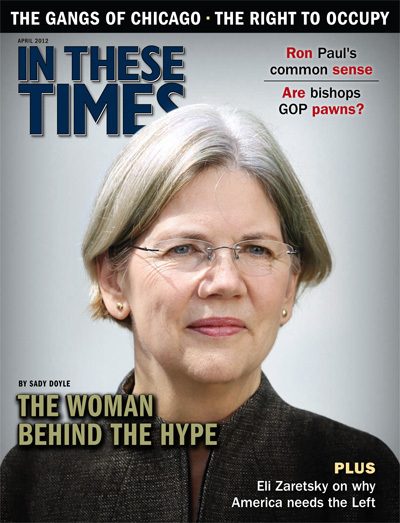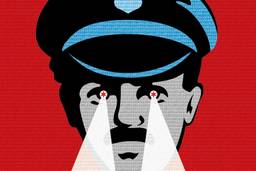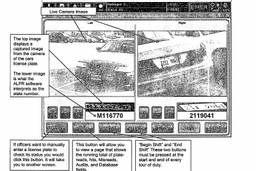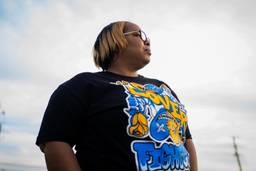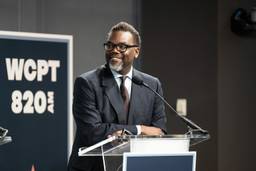Out of Order Comes Chaos
Chicago’s black gangs aren’t the criminal enterprises they once were, but the police won’t change their story.
Joel Handley
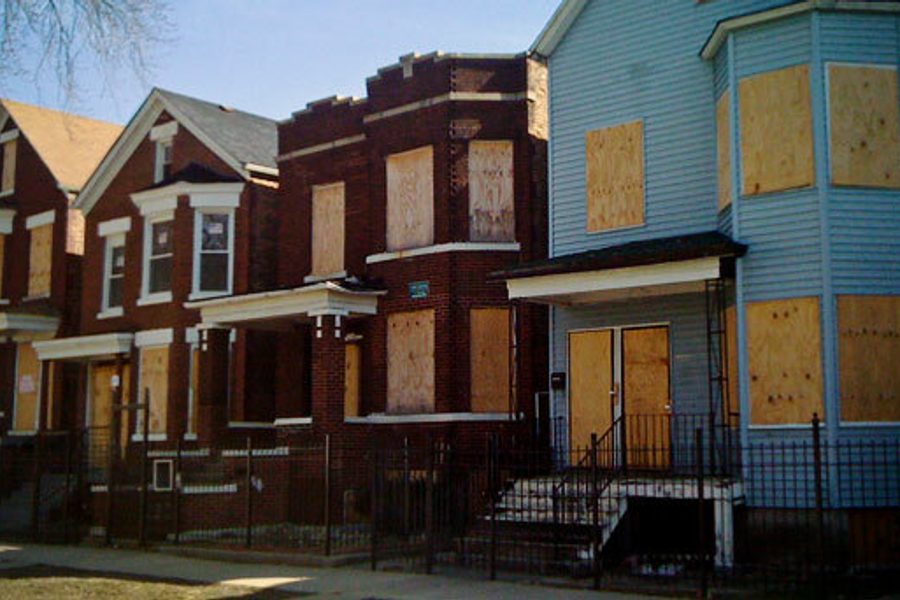
CHICAGO – In January, the Chicago Crime Commission released its 2012 Gang Book to much fanfare. Its findings – that most residents of the city “live and work within feet of a gang’s operations,” and that there are more than 70 gangs with as many as 150,000 members – were faithfully repeated by Chicago media outlets. The president of the commission, former Chicago police superintendent Jody Weis, explained to Fox Chicago News:
What we’re seeing today with these younger street gangs, with these hundreds and hundreds of factions of gangs out there [is] it might be four or five kids on a corner, but they’re still organized, they’re still a gang, they’re still a criminal enterprise, selling illegal products, enforcing often times their turf with weapons.
But some researchers in Chicago and gang members themselves scoff at this official narrative – starting with the definition of “gang.” The Gang Book defines a street gang as “an organized group that participates in criminal, threatening or intimidating activity within the community” using, among other characteristics, “a defining hierarchy,” “a regular meeting pattern,” “a code of conduct” and “an organized, continuous course of criminal activity.”
Lance Williams, assistant director of Northeastern Illinois University’s Carruthers Center for Inner City Studies and the co-author of The Almighty Black P. Stone Nation: The Rise, Fall, and Resurgence of an American Gang, says the vast majority of black gang members in Chicago do not fit this official description. He estimates that at most 10 percent are involved in criminal activity, such as drug dealing or extortion. And even though this minority may self-identify as being part of a gang, the gang has nothing to do with their crimes. “They might happen to be part of a gang, but they took that upon themselves,” he says. Unlike in the ’80s and ’90s, when highly organized, hierarchal gangs controlled Chicago’s underground economy, today there’s no leadership around even to get a kickback.
“Between the War on Drugs and the war on street gangs in Chicago, the whole infrastructure fell apart – there’s no top-down control,” Williams says. In addition, there are no formal rituals for initiation. Gangs are largely a block-by-block neighborhood association. Williams works closely with the 8-Tray Stones, a 300 – 500 member “set” of Black P. Stones based at 83rd Street (“8-Tray”) on the South Side that ranges in age from young children to grandfathers. At an early age, the men in the neighborhood learn the Stones handshake or gang sign, but that’s the extent of their affiliation.
One member of the Stones echoes these points. “The Black Stones aren’t any more a gang than any tribe in Africa,” says “Heru,” the pseudonym of a 33-year-old who spoke on condition of anonymity. “A lot of us are extended families. We don’t look at it as being affiliated with a gang.”
According to Williams, more than 70 percent of self-identified gang members in Chicago are chronically unemployed. They live with their mothers, grandmothers or girlfriends, rarely leaving the one or two blocks around their home. Many dropped out of school while they were young and are unprepared for most forms of legitimate employment. They wait around for a “lick,” or a quick opportunity to make a few hundred dollars – such as selling a small collection of knock-off purses to a girlfriend’s friends.
So here’s a more accurate definition of a black “street gang” in Chicago: a highly unorganized smattering of largely impoverished, unemployed young men who rarely engage in illegal activity; do not comprise a hierarchy, hold regular meetings, adhere to a code of conduct nor secure a “continuous course” of any kind of work, whether illegal or legal. Those involved are often hesitant to even call their affiliation a “gang,” because the word conjures an image so far removed from the realities they witness.
“The majority are good kids in a bad situation – and even then, most don’t sell drugs or shoot anybody. They kill themselves, drinking and smoking themselves to death,” Williams says.
‘One foot in and one foot out’
More than 50 percent of Chicago’s working-aged black males are jobless, according to a 2010 study by the University of Wisconsin-Milwaukee. As of February, 32 percent of black Chicagoans were living in poverty, the highest poverty rate for African Americans in any American city, according to The Chicago Reporter. As of January, the official national unemployment rate for black males was 12.7 percent.
“People don’t just go to the streets,” says John Hagedorn, an associate professor in the Department of Criminal Justice at the University of Illinois-Chicago. “They’re getting marginal work, losing it, coming back to the streets. There’s a huge set with one foot in and one foot out. Former gang members are trying to move on and having a hard time of it. People that were working their way up got pushed back down.” Williams sees a similar dynamic in the lives of some college-educated young men. They escaped the neighborhood by doing well in school, but can’t find a job after graduation. Now they’re home, and unprepared for life on the streets.
“The street economy has always been large and not that lucrative, except for those at the top,” Hagedorn says. “On the streets, the depression is steady. [The gangs] are the underclass.” The Great Recession that began in August 2008 made a desperate situation worse, while decimating avenues for mobility. The “recovery” now being trumpeted from Wall Street to the White House isn’t perceptible in Chicago’s most impoverished neighborhoods.
Even work in the standbys of the traditional underground gang economy – extortion and drug dealing – is more difficult to come by, as small businesses shutter their windows and drug prices soar. One kind of extortion that used to pay well – shaking down a contractor who is building in the neighborhood – is now rife with problems, according to Williams. Since the economic recession began, there’s less construction and more competition among extorters. With the breakdown of the gang hierarchy, an older extortion-savvy person may recruit young muscle to help pressure the contractor, only to keep all the money for himself.
Heru has witnessed the change from the relative heights of the ’80s and the ’90s, when the Stones, Gangster Disciples and Vice Lords vied for lucrative drug real estate. Now, he says, “Drug dealing is depleted. It’s a waste of time.” A “key,” or kilo, of heroin used to cost around $15,000, Williams says. Today, a key costs between $35,000 and $40,000, prohibitively expensive for most of the poor young men involved in the drug trade. Street prices haven’t gone up proportionally, squeezing profit margins.
“My neighborhood [Auburn Gresham] is similar to the early ’80s. There’s lots of robberies, car jackings. [But] in the late ’80s and ’90s, it was more drugs and murder,” Heru says. “Our respect for the elders and women wasn’t strong, but it used to be more present than you would have thought. Now even that’s leaving.”
But it’s not all so bleak. Heru sees himself in the social uplift/Black Power lineage that characterized the Stones in the ’60s and ’70s, when they organized for housing and civil rights. “You can say it was the times, but it’s an aroma that lingers. We still got people like that that could do some good,” he says.
‘Gang-related’ violence – and desperation
According to the Chicago Police Department, 2011 was a good year for the city because the murder rate went down. The year ended with 433 murders, compared to 436 in 2010, marking the lowest murder rate since 1965, when 395 people were killed. (When touting this, the CPD and local media neglect the fact that Chicago’s population has fallen by 800,000 – more than 22 percent – during the last 45 years.) Police officials soberly add that although there are fewer homicides, more are gang-related: 62 percent in 2011, compared to 48 percent in 2005.
But not everyone believes the official story.
“It’s easy for the police to say ‘gang-related’ when they have no idea” what led to the violence, says Von Stone, a 38-year-old hospital response case manager who works for Ceasefire, an organization that mediates violent disputes in troubled Chicago neighborhoods. (The group is profiled in the 2011 documentary The Interrupters.)
“It’s easy to sweep it under the rug by saying it’s a gang [problem].” Both Williams and Hagedorn are also skeptical of the CPD numbers – and of the concept of “gang-related” violence. Rather than being gang-motivated or directed, the violence they see is interpersonal, the result of disagreements and cross looks that escalate. It’s anti-social behavior “wrapped up in frustration, stress, lack of mobility … substance abuse … basically, just desperation,” Williams says.
“It’s not a gang problem,” Heru says. “It’s a socialization problem. Impoverished communities have violence issues.” When disagreements arise, he says, “We take it to an extreme, go and grab guns, that kind of thing. It’s like the Wild West. They didn’t think about it either; you just get your gun.” He ties the violence in his neighborhood in part to the demolition of high-rise projects, which forced tenants to relocate to other neighborhoods, and the central focus on incarceration as a crime deterrent. “Piling people on top of one another is not going to fix the problem. And if you’re just locking people up, how can you not expect chaos?” Heru says. “We’ve had kids raising kids for 20 years – what did you expect?”
Stone is often the first person to talk to a shooting victim after he’s been admitted to Advocate Christ Medical Center, which runs the only trauma center Chicago’s South Side. “Working in the hospital, I get the opportunity to speak to the victim and the family. I get all the details about the incident,” he says. Stone estimates that only 10 percent of shot patients are victims of truly gang-motivated violence. “I know [the violence] is interpersonal. It’s wrong place, wrong time – robbing, car jacking. It’s not gang-related at all.”
A shooting victim himself, Stone is also the founding director of MAGIC, an organization that assists people with disabilities. Its Hip-Hope program helps shooting victims find housing, rehabilitation and support services. “Everybody talks about how many die, but nobody’s talking about the survivors, about who’s leaving the hospital.” A February Chicago Reporter analysis found that between 2008 and 2011, there were on average 1,850 victims of aggravated battery with a firearm per year.
But like too many young African Americans struggling to survive in a devastated local economy, Hip-Hope is another casualty of the recession. After nearly five years of operations, in 2011 it lost its state funding. Stone is currently looking for other donors.
Though social programs like Stone’s help victims, Heru wants to see a change in consciousness to stop the violence: “The manifestation of thought is the most powerful thing on the planet. In the same way that we tell our children they can drain a shot from the free throw line, and then they do it, we need to teach our children they can be the intellectual leaders of the planet.”
Until then, the specter of gangs will continue to blind the city to the poverty and immobility behind street violence.
This story concludes “The Other Chicago,” a five-part series supported by the Local Reporting Initiative of Community News Matters, underwritten by The Chicago Community Trust with help from the McCormick, MacArthur, Knight and Driehaus Foundations, and administered by The Community Media Workshop and The Chicago Reporter.
